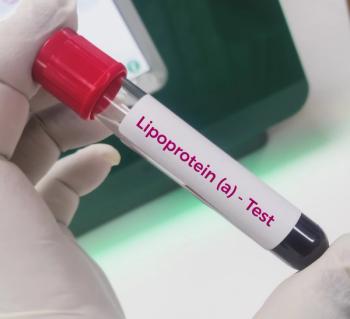
Top 5 Therapeutic Areas for 2019
The biggest drug categories and medications set for approval this year.
Cancer and diabetes remain top therapeutic areas for managed healthcare executives to watch in 2019, and are joined by heart disease, chronic obstructive pulmonary disease (COPD), and mental health.
“These five conditions are extremely complex with disease processes that often impact multiple systems. Diagnosis and effective, individualized treatment for these conditions are also very important,” says Christopher Peterson, PharmD, director, Emerging Therapeutics,
Diabetes
Eric Bricker, MD, chief medical officer and cofounder of
“It’s hard to treat and difficult to control without medications, and patients face the consequences of stroke, heart disease, kidney failure, neuropathy, and retinopathy,” he says. “In addition, physicians don’t always diagnose patients soon enough because they are asymptomatic.”
One concern of Bricker’s is failure of physicians to initiate or intensify therapy when people with type 2 diabetes do not achieve glycemic control right after diagnosis.
Related article:
“Treating diabetes as a population might get worse before it improves because of childhood obesity. As younger people get type 2 diabetes, they will suffer the consequences at an earlier age,” Bricker says.
Bricker doesn’t believe insulin is a magic bullet. “While it can effectively control type 1 diabetes, it inhibits the body’s ability to breakdown fat. Insulin for type 2 diabetics may treat the short-term high blood sugar with insulin, but that insulin prevents reducing an underlying cause-obesity. You have short-term gains for a long-term problem,” he says.
He is optimistic, however, that diabetes prevention will draw more attention. For one thing, manufacturers will be required by January 1, 2021, to include the percent of added sugars in grams and percent daily value on their food labels.
Although Bricker says no breakthrough diabetes drugs are expected for 2019, there are some medications hitting the marketplace.
Oncology
Oncology is also a top therapy class because of the large population affected. More than 1.7 million new cases of cancer are diagnosed each year in the United States,
She says cancer therapies represent about one-third of all specialty drugs in the pipeline, so a significant number of cancer drug approvals are expected into the future.
Spending on cancer drugs
In 2018, the FDA approved 12 new cancer drugs, three of them breakthrough therapies-Azedra (iobenguane I 131) for adrenal tumors; Poteligeo (mogamulizumab-kpkc) to treat a rare kind of non-Hodgkin lymphoma; and Libtayo (cemiplimab-rwlc) for metastatic cutaneous squamous cell carcinoma.
Related article:
The majority of these new drugs, Tharaldson says, are targeted therapies, which require pharmacogenetic testing: Braftovi (encorafenib) and Mektovi (binimetinib), both for melanoma; Tibsovo (ivosidenib) for acute myeloid leukemia; Vizimpro (dacomitinib) for non-small cell lung cancer; and Talzenna (talazoparib) for breast cancer. Tibsovo and Vizimpro also received orphan drug designation from the FDA.
“While there are a lot of drug options and many cancer drugs approved each year, they are typically very expensive with new targeted therapies costing around $150,000 per year,” Tharaldson says.
Poteligeo is the first FDA-approved treatment for relapsed or refractory Sézary syndrome. “This newly approved therapy demonstrates a growing trend to meet the needs of patients with rare, hard-to-treat cancers. This drug was granted a breakthrough designation by the FDA and also received a priority review toward its approval. However, there is always an associated cost with scientific advancements in cancer treatments,” says Carina Dolan, PharmD, director of clinical oncology for Vizient Inc., a healthcare performance improvement company based in Irving, Texas. Its estimated WAC cost is around $3,700 per vial.
Lutathera (lutetium Lu 177 dotatate), targeting GI tumors, is another expensive drug, pricing out at $49,600 for a course of treatment (generally given intravenously every eight weeks for a total of four doses). Dolan says Poteligeo and Lutathera are two of the most expensive therapies approved in 2018. Poteligeo is a humanized monoclonal antibody and the first biologic drug used to target CC chemokine receptor 4 (CCR4), while Lutathera is attached to a radioactive isotope.
Dolan believes that two other drugs approved in 2018 will have a substantial effect on pharmacy-Talzenna (talazoparib), a poly ADP-ribose polymerase (PARP) inhibitor approved to treat BRCA-mutated, HER2-negative, locally advanced or metastatic breast cancer and Libtayo (cemiplimab-rwlc), a PD-1 inhibitor. “Talzenna is in a much-needed therapeutic category, and Libtayo is the first drug approved for its indication; however, its target population is small,” she says.
Receiving approval in early 2018, Erleada (apulutamide) is the first FDA-approved treatment for non-metastatic castration-resistant prostate cancer. Dolan expects it to have a large impact and substantial utilization due to the size of its targeted population.
As 2018 ebbs, two other cancer drugs have been approved: Empliciti (elotuzumab) in combination with Pomalyst (pomalidomide) and dexamethasone for the treatment of relapsed or refractory multiple myeloma and Lorbrena (lorlatinib), a third-generation drug for anaplastic lymphoma kinase ALK-positive metastatic non-small cell lung cancer whose disease has progressed on other medications.
For Empliciti, the ELOQUENT-3 trial indicated a reduced risk of disease progression or death by 46% compared with pomalidomide and dexamethasone alone.
Lorbrena received accelerated approval based on tumor response rate and duration of response. Continued approval for this indication might be contingent upon verification and description of clinical benefit in a confirmatory trial.
In November, CMS granted two unique assigned Q codes to Retacrit (epoetin alfa-epbx) injection, the first available biosimilar to Procrit (epoetin alfa) and Epogen (epoetin alfa) in the United States, at a substantial discount. Pfizer began shipment of Retacrit to wholesalers in the United States on November 12, 2018.
Related article:
Retacrit will be introduced at a WAC of $11.03 per 1,000 units/mL, which is 57.1% below the WAC of Procrit, and 33.5% below that of Epogen, its reference product.
COPD
Albert Rizzo, MD, chief medical officer for the American Lung Association, says
“Not only does it affect a large population, but patients with COPD often have significant comorbidities, such as heart disease, diabetes, and arthritis. COPD also has a socioeconomic impact on healthcare because exacerbations or flares often require hospitalization and chronic care, and COPD is often diagnosed when it might already be in the late stages,” he says.
He says that most available medications only alleviate symptoms-neither curing nor slowing the condition’s progress-“but at least the current drugs can keep sufferers independent and functional in many cases.”
The majority of COPD medications are administered via inhalers or nebulizers, some with steroids to lessen the tightness of the airway. “It is not always easy to find the right drug for the right patient at the right cost but fortunately, there are many molecules and devices from which to choose,” he says.
There are currently no biologics indicated for COPD, but there are three non-biologics entering the space-Yupelri (revefenacin) inhalation solution, Trelegy Ellipta (fluticasone furoate/umeclidinium/vilanterol), and Duaklir (aclidinium/formoterol).
The FDA-approved Yupelri, a long-acting muscarinic antagonist (LAMA) administered via a standard jet nebulizer for the maintenance treatment of patients with COPD, on November 9, 2018. It is the first once-daily, nebulized bronchodilator to be approved for COPD in the United States, say manufacturers Theravance Biopharma and Mylan.
In April 2018, Trelegy Ellipta received an expanded indication for a long-term, once-daily, maintenance treatment for patients with COPD, including chronic bronchitis and/or emphysema; it also reduces exacerbations of COPD. The objective is to include a broader population of COPD patients with airflow limitation or who have experienced an acute worsening of respiratory symptoms.
Related article:
The FDA accepted an NDA from AstraZeneca for Duaklir, a twice-daily combination of a long-acting beta2-agonist and a LAMA, with a Prescription Drug User Fee Act (PDUFA) date of March 31, 2019.
Rizzo recommends that primary care physicians consider performing spirometry or breathing tests more often when patients have symptoms so that they can diagnose COPD sooner and put patients on the right medications.
“Physicians and patients also have to face the stigma that patients with COPD sadly endure because the disease is often associated with smoking. We are working toward removing that stigma, along with advocating for more research dollars for COPD to get more patients treated and to move toward better drugs that can slow down or cure the disease; increasing access to pulmonary rehabilitation programs; and more patient and caregiver education about COPD,” Rizzo says.
Mental health
With so many different behavioral health disorders, Megan Ehret, PharmD, associate professor at the University of Maryland, says mental health is a huge area of concern that presents many challenges.
The CDC estimates that
“While many effective therapies are available generically, there will be continued development to help address patients who do not adequately respond to or cannot tolerate current therapies,” Peterson says.
Approved in July 2018 for the treatment of schizophrenia in adults are Aristada Initio (aripiprazole lauroxil), a long-acting injectable, atypical antipsychotic, and Perseris (risperidone), the first once-monthly subcutaneous risperidone-containing, long-acting injectable.
According to IQVIA, the market for long-acting antipsychotics was $3 billion in 2017. Perseris’ manufacturer, Indivior, expects the drug to earn $200 to $300 million in sales.
For the first time, Aristada Initio, in combination with a single 30 mg dose of oral aripiprazole, provides physicians with an alternative regimen to initiate patients onto any dose of Aristada (aripiprazole lauroxil) extended-release injectable suspension on day one. Its cost, about $1,500 a month, is comparable with other long-acting antipsychotics.
Ehret says the difference between these two drugs and older ones on the market are their administration and longer-lasting effects.
Esketamine is a small-molecule N-methyl-D-aspartate (NMDA) receptor antagonist nasal spray for treatment-resistant depression. Janssen submitted an NDA on September 4, 2018; its estimated PDUFA date is May 4, 2019. If it is approved, it would be the first new mechanism of action for treating depression in 30 years. The drug, however, hit a snag in a phase 3 study in September 2018, in which it failed to demonstrate a statistical significance for the primary end point, Janssen says.
Zulresso (brexanolone) from Sage Therapeutics is an allosteric modulator of GABAA receptor for postpartum depression and would be the first indicated for treatment of the condition. Because of its IV administration over 60 hours, it could require inpatient hospitalization, which would be a limiting factor due to convenience and cost, Ehret says.
Zulresso received breakthrough therapy designation in September 2016, and consequently submitted an NDA. On November 2, an advisory panel to the FDA recommended approval of the drug with a caveat-recommendations for a monitoring period after women receive the injection and no home use. The FDA extended the PDUFA date from mid-December 2018 to March 19, 2019.
Related article:
Sage is also studying another product (SAGE-217) for the treatment of major depressive disorder and postpartum depression, that is a similar compound for once-daily, oral administration, but a timeline is not yet available. Ehret says that no other medication exists with this indication.
Alkermes’ ALKS-5461 (buprenorphine/samidorphan), a combination of a non-addictive opioid modulator and buprenorphine for treating major depressive disorder in patients who have had an inadequate response to standard therapies, received a different fate than Zulresso. On November 2, an FDA panel failed to support ALKS-5461, the majority agreeing that the sponsor had not provided significant evidence of efficacy and that there were some inconsistencies across studies.
“Its mechanism is not something that has been approved for depression. Most depression medications work on serotonin, norepinephrine, or dopamine,” Ehret says. “This would be the first medication in this class to be approved and would provide a medication in the opioid class for depression.”
The company has set an estimated PDUFA date for ALKS-5461of January 31, 2019.
“Both Zulpresso and ALKS-5461 are quite novel in mechanisms for the treatment of subtypes of depression, and both come with risks and administration concerns; one is an IV drug, and the other is an opioid product, respectively,” Ehret says. “The new mechanisms and development of novel compounds speak to the continued need for additional treatments for depression, as one-third of patients ultimately don’t respond to current treatment modalities.”
Heart disease
Similar to the other therapeutic areas on the radar for 2019, heart disease has tremendous consequences and affects a large swath of the population. According to the CDC, about 610,000 people die of heart disease in the United States every year-one in every four deaths-and is the leading cause of death for both men and women.
Robert A. Harrington, MD, president-elect of the
Care for heart disease suffers from disparities with poorer populations having worse outcomes, according to Harrington. “Coronary artery disease, which contributes to other heart conditions, can be caused by obesity, diabetes, smoking, poor diets, and lack of exercise, all of which are more dominant in lower socioeconomic groups and contribute to the burden,” he says.
But paradoxically, he says there is a migration away from investing in heart medications in the last eight to 10 years-more for cancer and rare diseases. He attributes the problem to expensive clinical trials.
On the positive side, Harrington says many of the important statins, antithrombotics, and ACE inhibitors are now generic, such as the anticoagulant warfarin. According to GoodRx, it is available for $18.26 per month, while the average price for Eliquis (apixaban), a much newer blood thinner, is $522.36 per month.
Related article:
Harrington says Eliquis might be more expensive, but its ease of use and safety profile make it cost-effective-as found in a
To mitigate the high cost of some branded heart medications, Amgen recently reduced the price of Repatha (evolocumab), a PCSK9 that treats high cholesterol, by 60% to $5,850 a year, which Harrington says is a “big deal” in cardiac circles.
Although there are a limited number of novel drugs in development for heart disease, Peterson says the NDA for bempedoic acid, a small molecule compound with a dual mechanism of action to lower LDL cholesterol for those who cannot tolerate statins, is expected during the first half of 2019, leading to a 2020 approval.
Mari Edlin, a frequent contributor to Managed Healthcare Executive, is based in Sonoma, California.
Newsletter
Get the latest industry news, event updates, and more from Managed healthcare Executive.






















































